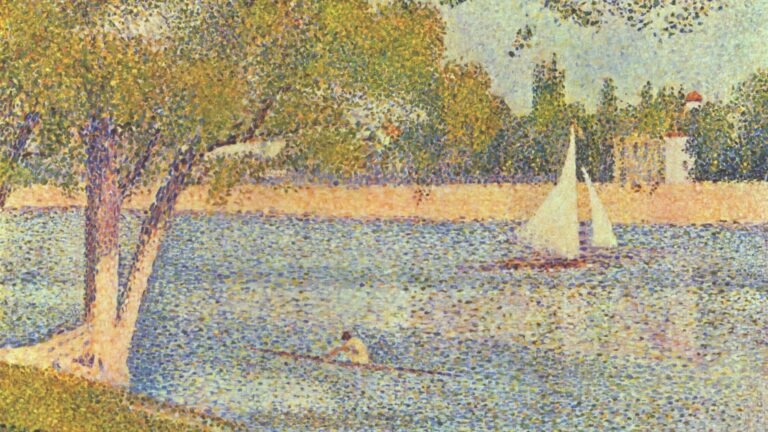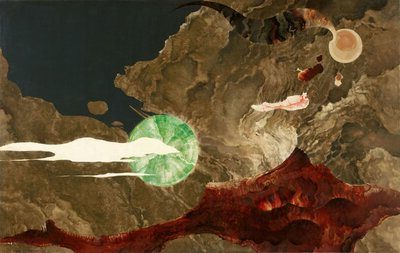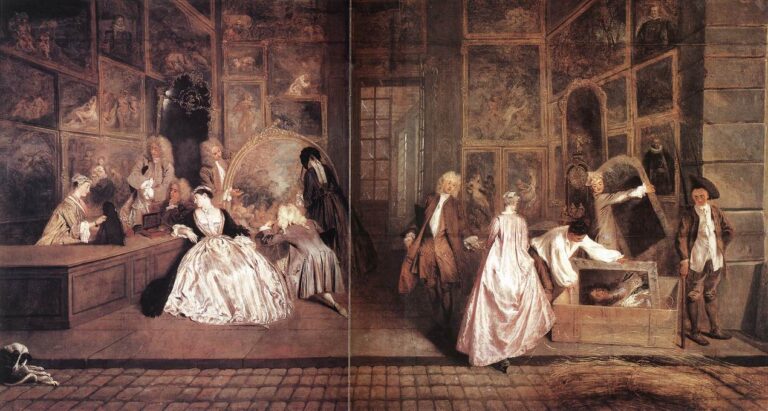Easy Salvador Dali Paintings: A Beginner’s Exploration
Born: May 11, 1904, Figueres, Spain
Death: January 23, 1989, Figueres, Spain
Art Movement: Surrealism
Nationality: Spanish
Influenced By: Pablo Picasso and Joan Miró
Institution: San Fernando Royal Academy of Fine Arts and Municipal Drawing School, Spain
Easy Salvador Dali Paintings: A Beginner’s Exploration
Understanding Salvador Dalí and Surrealism
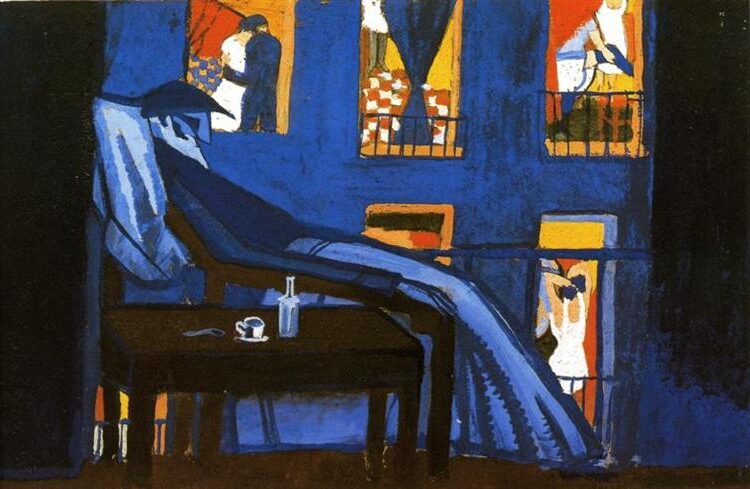
The Voyeur (c.1921) by Salvador Dalí
Salvador Dalí was as intriguing as his artwork. He was filled with creativity and boldness. Surrealism, a movement he was part of, aimed to unlock the subconscious. It drew inspiration from dreams and Dadaism.
The Intriguing Life of Salvador Dalí
Salvador Dalí, born in 1904 in Figueres, Spain, was a prominent figure in the Surrealist movement. He displayed remarkable artistic talent from a young age. Eventually, he studied at the San Fernando School of Fine Arts in Madrid.
Dalí’s works are known for their striking, dreamlike quality. His technique combined realistic detail with fantastical elements, creating unforgettable and bizarre images.
Dalí was heavily influenced by Sigmund Freud’s theories on the subconscious and dreams. This influence is evident in his art, where he explored themes of desire, time, and the human psyche.
His eccentric personality and penchant for publicity turned him into an icon, but it was his artistic genius that truly set him apart.
Origins and Philosophy of Surrealism
Surrealism emerged in the early 20th century as a response to the chaos of World War I. It has roots in Dadaism, a movement that rejected traditional artistic norms.

Plant (1924) by Salvador Dalí
In 1924, André Breton’s Surrealist Manifesto formally defined the movement. Surrealists sought to free the mind by delving into the subconscious and exploring dreams. They used unexpected juxtapositions to challenge reality.
Dalí became one of Surrealism’s leading figures. He employed the “paranoiac-critical method” to access a state of altered perception and creativity. This approach allowed artists to see the world through a lens of irrationality and dream logic. Ultimately, it produced works that seemed to defy the laws of reality.
Iconic Salvador Dalí Paintings
Salvador Dalí’s paintings are renowned for their unique and imaginative artistry. Each artwork is infused with surreal and captivating elements that challenge perception and interpretation.
The Immortal ‘The Persistence of Memory’

The Persistence of Memory (1931) by Salvador Dalí
The Persistence of Memory (1931) is perhaps the most famous painting by Salvador Dalí. This artwork is known for its melting clocks, which have become iconic in the world of surrealism. The painting presents an eerie, dreamlike landscape where time seems fluid. This piece embodies Dalí’s fascination with the concept of time and memory, evoking a sense of mystery and introspection. The location and lighting in the painting add to its surreal tone, making the viewer question reality.
‘Swans Reflecting Elephants’ and Dual Imagery
Swans Reflecting Elephants (1937) is a brilliant example of Dalí’s use of double images. The painting shows swans in front of leafless trees, whose reflections in the water transform into elephants. This dual imagery technique fascinates viewers, revealing Dalí’s interest in optical illusions and subconscious associations. It captures the idea of transformation and fluidity, common in his work. By combining these elements, Dalí encourages viewers to see beyond the obvious.
‘The Elephants’ and Symbolism of Strength
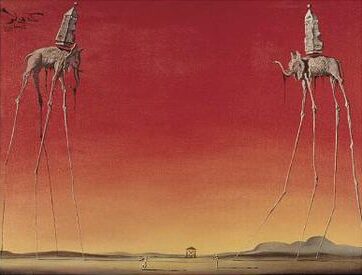
The Elephants (1948) by Salvador Dalí
In The Elephants (1948), Dalí portrays long-legged elephants carrying heavy obelisks on their backs. These creatures symbolize strength and power, a common theme in Dalí’s work. The contrast between the delicate legs and the massive load they carry represents the tension between fragility and endurance. This painting reflects Dalí’s ability to blend symbolism with surreal imagery, encouraging viewers to consider deeper meanings behind the whimsical façades.
Religious Themes in ‘The Sacrament of the Last Supper’
The Sacrament of the Last Supper (1955) showcases Dalí’s exploration of religious themes. This painting depicts Jesus and his disciples within a geometric structure, suggesting a fusion of mathematical precision and religious devotion. A glowing halo and ethereal figures highlight the painting’s spiritual aspects. Dalí’s use of light and perspective deepens the mystical atmosphere. The artwork reflects his fascination with the divine and the metaphysical, combining these elements into a cohesive whole.
Techniques and Inspirations

Landscape Near Ampurdan (1925) by Salvador Dalí
Salvador Dali was renowned for his imaginative blend of reality and dream-like visuals. His techniques and inspirations drew from his unique method of artistic transformation, his exploration of scientific ideas, and deep admiration for historic art figures.
The Paranoiac-Critical Method
Dali developed the Paranoiac-Critical Method as a way to tap into his subconscious, using irrational associations to inspire his work. This technique allowed him to transform everyday objects into dream-like scenes. He often painted familiar objects melting or floating, creating an otherworldly effect. Dali’s method was crucial in bringing surrealism to life, as it emphasized the power of the mind in visual creation. This approach made his art thought-provoking and visually striking.
Innovation Through Science and Mathematics
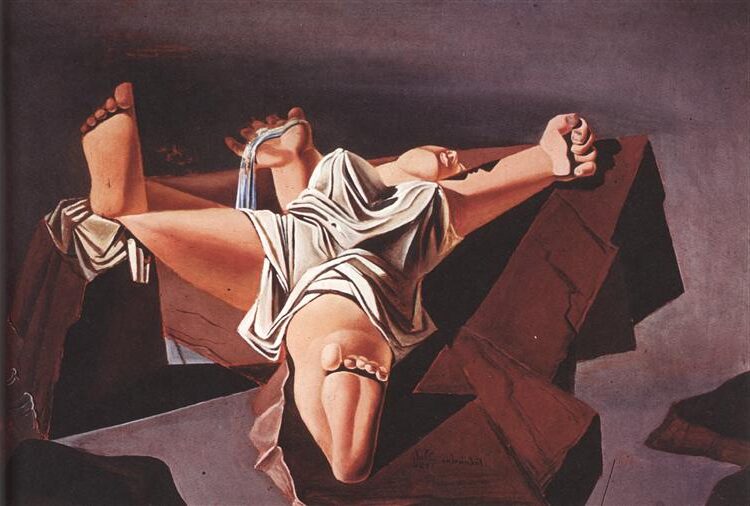
Figure on the Rocks (1926) by Salvador Dalí
Dali’s fascination with science led him to incorporate scientific concepts into his art. He explored Quantum Physics and Einstein’s Theory of Relativity, seeking to meld these ideas with his surreal style. The concept of time, inspired by relativity, appears prominently in works like “The Persistence of Memory.” Dali’s exploration of Nuclear Mysticism reflects his interest in the atomic age, where he combined religious themes with scientific imagery to create a unique perspective.
Influence of Renaissance Masters
Dali was heavily inspired by the Renaissance Masters. He studied classical techniques to improve his skillset, meticulously blending their methods with his own surreal themes. Dali admired the precision and anatomy found in Renaissance art, which is evident in his detailed and realistic rendering. His works often include nods to Leonardo da Vinci and other greats, seamlessly merging past and present artistic visions to craft extraordinary paintings.
Dalí’s Artwork Beyond Paintings


Salvador Dalí’s creativity stretched far beyond traditional paintings. His surrealist imagination gave birth to a range of innovative sculptures and he also made significant contributions to film and photography.
Surrealist Objects and Sculptures
Dalí’s sculptures transformed surreal concepts into tangible forms. Notable sculptures like the Lobster Telephone display his iconic style. This piece features a lobster on the handset of a telephone, linking two unexpected objects in a whimsical way.
His Burning Giraffe sculpture is another example. Depicting a giraffe in flames, it mirrors the themes found in his paintings. Such sculptures invite viewers to see the absurd and impossible as part of the everyday world.
In Galatea of the Spheres, Dalí presented his fascination with science, particularly atomic theory. This artwork, while painted, inspired three-dimensional interpretations exploring the intersection of art and scientific concepts.
Contributions to Film and Photography
Dalí was also active in the world of film and photography. His collaboration with filmmaker Luis Buñuel on the surrealist film Un Chien Andalou is legendary. The film’s dreamlike sequences and shocking imagery helped define surrealist cinema.

Un Chien Andalou (1928) film still by Salvador Dalí
In photography, Dalí partnered with Philippe Halsman, producing striking images where reality and fantasy overlapped. Dalí often staged elaborate scenes, integrating surreal elements into everyday settings.
These efforts in film and photography commanded attention and showcased his ability to merge visual art with other media. His approach continued to challenge and excite audiences, consistently blurring the lines between different art forms.
Frequently Asked Questions
Salvador Dali’s artwork is known for its vivid imagination and unusual compositions. His style can be easily identified and studied through several themes and motifs.
What are the defining characteristics of Salvador Dali’s painting style?
Salvador Dali’s painting style is marked by precise detail and dreamlike imagery. He often used surreal landscapes and melting objects to create a sense of distortion and surprise. His use of bold, contrasting colors and elongated figures is also notable.
How can one identify the main themes in Salvador Dali’s artwork?
Dali’s main themes include dreams, subconscious thoughts, and surreal narratives. He often explored the distortion of time and reality, using recurring motifs like melting clocks and distorted figures. His work reflects his fascination with psychology, particularly the theories of Sigmund Freud.
Which paintings by Salvador Dali are considered his most iconic masterpieces?
“The Persistence of Memory,” with its famous melting clocks, is one of Dali’s most iconic paintings. Others include “The Elephants,” “The Great Masturbator,” and “The Disintegration of the Persistence of Memory,” each featuring his signature surreal elements and intricate detail.
Can you list Salvador Dali’s paintings that are easiest for beginners to analyze?
Beginners might find it easier to analyze paintings like “The Elephants” and “Galatea of the Spheres,” as they offer clear imagery combined with Dali’s characteristic surreal twists. These works provide a good starting point for understanding Dali’s style without overwhelming detail.
What is the significance of ‘The Persistence of Memory’ within Salvador Dali’s body of work?
“The Persistence of Memory” is significant for its exploration of time and dream imagery. The melting clocks symbolize the fluidity of time in our subconscious. This painting is a hallmark of surrealism and highlights Dali’s ability to visualize complex concepts in simple, memorable forms.
How has Salvador Dali’s surrealist work influenced modern art?
Dali’s work has influenced modern art by pushing the boundaries of imagination and exploring the subconscious mind. His unique approach inspired painters and artists across various mediums to incorporate surreal and dreamlike elements in their work. This has impacted everything from advertising to pop culture.






